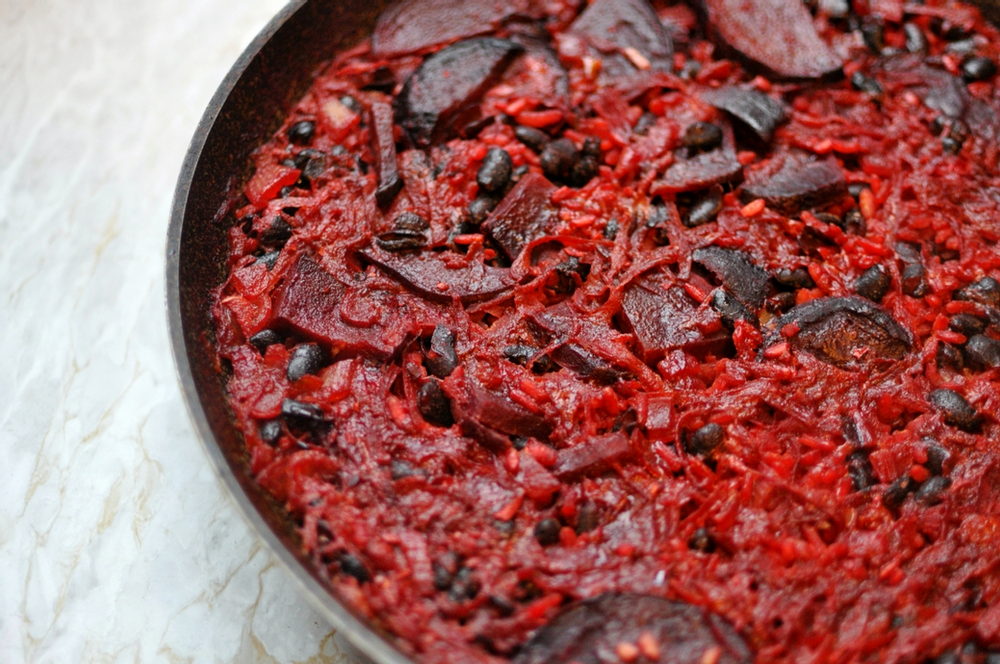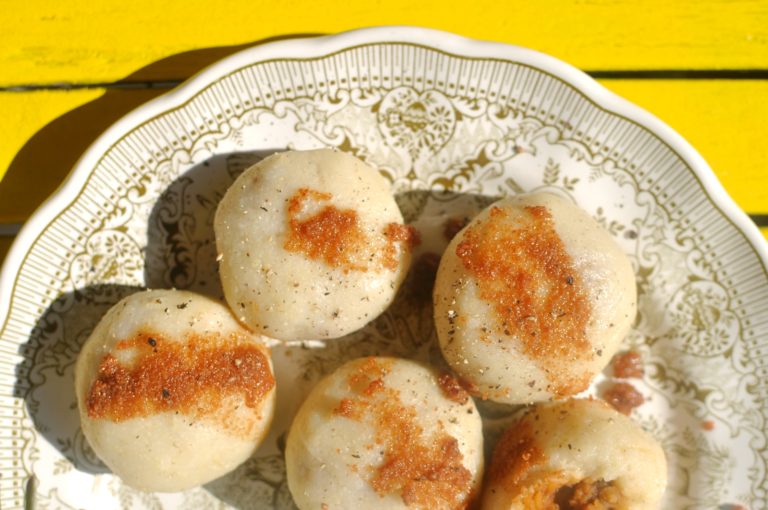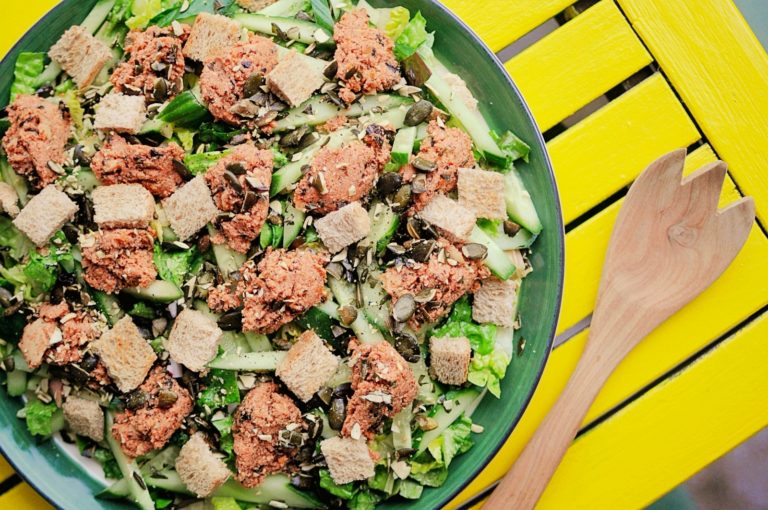The simplest beetroot paella with beans

In my opinion, the concept of Spanish paella is not sufficiently developed. After all, there are plenty of recipes for all kinds of risotto: in different colours and with different ingredients that can be adapted to the place or season we are currently in. Probably no one should be outraged at the thought of a good vegan risotto in which there is no point in looking for butter and parmesan cheese. There are not that many versions of this famous Spanish pan-fried rice, so I can imagine the indignation of paella lovers looking at my beetroot version. The preparation of paella seems much easier than the preparation of risotto, which requires a lot of stirring to finally achieve the creamy consistency. With the paella everything happens in one pan, and when we add rice to it we forget about the dish, we don’t mix it – just patiently wait until it’s ready.
When I was working on my version of paella, the priorities were: the taste, the interesting colour of the dish and the seasonality of the ingredients. That is why the beetroot is the main character here. Sprinkling lemon on a paella is also perfect here. In my opinion, it is a quick and delicious dinner.
The simplest beetroot paella with beans
- 200g of rice (a special variety for paella or risotto, eg. arborio. Short grain rice necessarily!)
- a lot of olive oil (a couple of tbsp)
- 2 medium-sized raw beets
- 4 cloves of garlic
- a piece of ginger (about 2 tbsp grated)
- 1 medium-sized onion (or half a large onion)
- 1 can of beans or a cup of cooked ones (white, red or black)
- 1 full tsp ground cumin
- 2 full tsp smoked paprika
- a good pinch of cinnamon (worth it!)
- a good pinch of chilli (worth it!)
- optional: a sprig of rosemary
- salt to taste (I add 1 flat teaspoon of salt and an extra pinch on the plate)
- 650ml of water (almost 3 glasses)
- 1 lemon
- For serving: parsley and/or finely chopped chives
- Start with preparing all the vegetables: dice the onion, cut the garlic into small pieces (you can also grate it), grate the ginger. Wash the beets and cut the ends. It is not necessary to peel the beets. Grate one beetroot coarsely, and slice the second beet.
- In a large pan, heat the olive oil, add the onion and fry for two minutes. Add the garlic, ginger and spices: cumin, paprika, cinnamon, chilli and salt. Fry for another minute.
- Add the beetroots: both grated and sliced, then add the beans. Mix everything, fry for two minutes, and then pour a mix of hot water and half a lemon’s juice over the whole thing.
- Spread the raw rice evenly over the entire pan. Stir gently so that the rice can cover the whole surface of the pan.
- When everything starts to boil, leave the paella on medium heat for about 15-18 minutes. It is important not to add anything else to the pan at this stage.
- After the rice has absorbed all the liquid, turn off the heat and keep the pan covered for 10 minutes.
- Serve the whole paella in the pan, sprinkled with parsley, and with lemon slices (it is worth sprinkling it on a plate with an additional portion of juice).
- The traditional paella is often eaten directly from the pan, but if you do not have a special paella pan, I do not recommend this solution, as you may damage your pan’s coating.
- Unlike Italian risotto, the key to good paella and to the right consistency of rice is… not to stir it! The rice should absorb the whole flavour and colour of the dish, it should even be let to partly dry up and become a bit crispy.
- Paella is one of the few dishes where the rice should be slightly al dente. Those experienced in the preparation of paella can also achieve “socarrat”, which is the incredibly tasty and crunchy (but not burnt!) rice-layer at the bottom of the pan.



